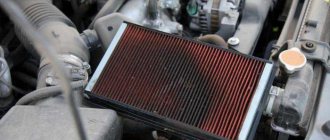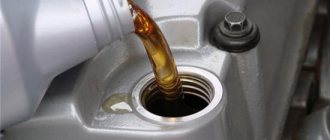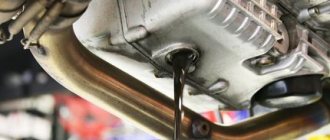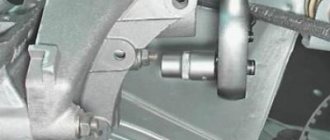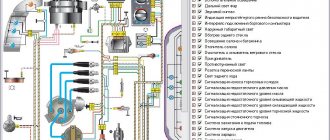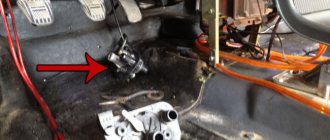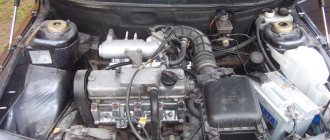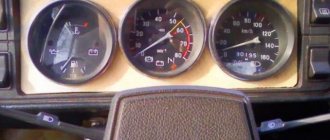Air is needed to process fuel. It, as we know, contains impurities and dust. In order to prevent unnecessary particles from entering the engine, an air filter is installed on the car. The more reliable and high quality it is, the more protected the motor is. The filter helps protect the motor from wear and unnecessary contaminants. Modern “defenders” should allow only 1% of pollution to pass through. This minimizes the risk of particles settling on the engine. Of course, a lightning rod has a service life. Sometimes it ends when the car’s mileage exceeds forty thousand kilometers. Each filter has a service life indicated. Its wear also depends on how the machine was operated. Elements differ in the material from which they are made, shape and size. For example, round and rectangular. The latter, by the way, clean better than the former. The material differs between carbon and paper filters, closed and open. In an internal combustion engine, paper “protectors” of the motor are usually used.
Car oil getting into the air filter is a common problem.
Reasons for the appearance of oil in the air filter and its housing
Air filter that has absorbed oil
If we take the normal condition of the car, then the air filter must be dry throughout its entire service life. But the presence of oil indicates that there are problems in the mechanical part of the engine. Therefore, we will not consider problems in the electronic control unit, since this part has nothing to do with it in this case . So, let's look at the reasons for this effect:
- Compression.
- Adjustment of valves.
- Crankcase ventilation.
- Additives.
- Catalyst.
Once the causes have been considered, you can move directly to methods for solving problems, in the order in which they might occur.
Solution methods
The main reason where the problems lie is the valve stem seals. It is through them that the oil enters the pipe, which squeezes the lubricant onto the filter. First of all, it is necessary to replace this particular element. Of course, there are quite a lot of reasons besides valve seals, so it is necessary to dwell on each separately.
Air filter in oil compared to new and clean
Compression drop
A loss of compression may cause traces of oil to be visible on the air filter element. The problem can be corrected quite easily - a small tube with a diameter of 1 mm extends from the brood pipe near the crankcase. It often gets clogged, which causes a drop in compression. Next you need to clean it and put it in place. If you put your finger to the tube and feel that it is being sucked in, then you need to adjust the valves.
The process of measuring engine compression
Adjustment of valves
A fairly common cause, along with valve stem seals, is incorrect valve clearance. A characteristic sign is the appearance of bluish smoke from the exhaust system. To eliminate the malfunction, a simple adjustment of the valve clearances is necessary. This is quite simple and not difficult to do.
Valve clearance adjustment process
Crankcase ventilation
One of the reasons for the appearance of oil in the car air filter is the oil level is higher than normal or its poor quality . So, at an increased level, the crankshaft creates foam, which enters the rest of the system through the ventilation pipes, especially the air filter element.
Oil in the air corrugation that goes into the filter
In order to solve the problem, it is necessary to check the oil level; if it is higher than normal, then the residual amount must be drained.
Also, we unscrew the clamps of the crankcase ventilation pipes and change the tubes. Often everything is replaced because cracks or oil contamination occurs. Blue or black smoke from the exhaust indicates that in addition to the fuel mixture, excess oil is also being burned in the cylinders, which releases soot. It is this that settles and clogs the walls of the crankcase ventilation pipes.
A clogged crankcase ventilation pipe is one of the reasons for oil in the air filter
Additives
Additives are the most controversial issue in use today. There are two opinions: the first is that they improve engine performance, the second is that they have a detrimental effect. So, what's the truth? The truth is that both opinions are half correct.
Thus, the use of additives on an engine that requires major overhaul will actually delay this process due to the formation of a film on the cylinder walls. But! For a functioning engine, this may seem disastrous, since the use of additives leads to disruption of the gas distribution mechanism, and therefore oil will accumulate in the corrugation and air filter, and also disrupt the circulation of crankcase gases.
All kinds of engine oil additives
Compression check
After checking the compression, you can breathe a sigh of relief or worry, since the cost of the repair depends on the result.
Impaired compression often causes the presence of oil in the VF, and also causes a number of other problems.
Compression check
To work you will need:
- Compressometer;
- A rag in oil, which you will use to determine the compression stroke;
- Adapter for spark plug holes. It is used when checking the combustion chamber for leaks;
- Compressor.
Now let's start checking.
- Warm up the engine to operating temperature, then turn off the fuel supply.
- In the case of a carburetor, you need to remove the hose, clamp or squeeze it with something, or lower it into a container.
- If you have an injector, remove the fuel pump fuse, start the engine and let it run. As soon as the fuel in the fuel rail runs out, it will stall on its own.
- Disconnect the ignition system by removing the center wire from the distributor (on the carburetor). The crankshaft position sensor at the injector must be disconnected.
- Remove all debris from the spark plug wells so that it does not end up inside the cylinders. Unscrew the spark plugs.
- Insert the compression gauge fitting while an assistant starts the engine. The starter should rotate the engine until the pressure gauge needle stops in one position.
- By analogy, measurements are carried out on each cylinder, the results are recorded on paper.
- To calculate ideal compression, use the formula - 1.2 * Compression ratio.
See your owner's manual for the compression ratio of your engine. Please also note that measurements may have some error.
What you need to know about verification
- If the indicator is 12 atmospheres, this indicates that your engine is almost in perfect condition.
- When checking the compression on a cold engine, the compression readings will be significantly lower. Perform the test only on the engine at operating temperature.
- If the battery is partially discharged, the test data will also not be accurate.
- The increase in compression occurs due to the combustion of oil in the cylinders.
What the results say
We take the paper where you wrote down the data of the check, carried out according to all the rules, and study what is wrong with the motor.
- Indicators in the range of 0-4 atm indicate a high probability of burnout of the piston, head gasket or valve.
- Compression of 4-6 atmospheres indicates that the piston rings or the partition between them have broken.
- If you get about 8-10 atm in each cylinder, the cylinder-piston group is worn out. Major repairs will soon have to be carried out.
- 12-12.5 atm - these are the indicators that occur in a new, run-in power unit.
- If the car has serious mileage, and the check data shows numbers equal to or exceeding the norm, oil has probably entered the cylinders due to wear of the cylinder-piston group or valve liners.
Obviously, the presence of oil in the filter does not bode well. But the problem can still be prevented if measures are taken in time.
conclusions
The appearance of oil in the air filter of the 16-valve VAZ-2112 can be caused by many factors. Therefore, it is necessary to regularly monitor and check the condition of the air filter, since its operation will determine how efficiently the engine operates.
Drivers rarely check whether the air filter is in order, although this should be done periodically, even if there are no engine malfunctions yet. And during a scheduled replacement, having taken out the cleaner, they are surprised - how did the oil turn out to be in the air filter, because the lubrication mechanism is not connected to the air supply system. But such a connection can arise; it appears as the power unit wears out.
Why does oil get into the air filter?
There are 4 most common reasons why oil leaks into the air filter:
- Heavily worn and coked piston rings. Because of this, excess lubricant is poorly removed from the cylinder walls, and some of it ends up in the crankcase.
- The throttle hose for crankcase gases is clogged with dirt.
- Clogged oil deflector drain. The remaining liquid cannot flow through it back into the crankcase, and the oil mixed with gases floods the air filter.
- Critical contamination of the filter element, due to which it loses its quality and does not allow air mass to pass inside the engine in sufficient volume. To compensate for the lack of air, the engine begins to suck it from the crankcase.
The result is always the same - the air filter fills with oil. What to do if motor lubricant is found in the cleaner?
What to do if oil gets in
If oil flows into the air filter, this most often indicates a malfunction of the internal combustion engine. The deficiencies must be eliminated as quickly as possible before the engine fails. You can determine the reason why the air filter is in oil as follows:
- Check compression in all cylinders individually. 9-12 atm is considered normal. In this case, the compression values in different cylinders should be as close as possible - with a difference of no more than 1 atm. If the results obtained are below the minimum, this indicates serious problems with the engine;
- assess the color of the exhaust gases. If the exhaust is black or blue, the parts of the cylinder-piston group are worn out.
If the compression is normal and the smoke from the exhaust pipe is normal in color, the problem may not be with the engine. It is possible that oil is filling the air filter due to obstruction of the hoses for removing crankcase gases. In this case, it is enough to clean or replace the pipelines. If nothing has changed, you need to carefully check the internal combustion engine and related systems.
If you find that the engine air filter is oily, but you cannot postpone your trip, you can temporarily fix the problem and carry out a full repair after returning. To do this you need:
- remove the crankcase gas supply hose from the filter fitting;
- close the fitting;
- connect a longer hose to the crankcase ventilation so that the lower section of the tube is located below the level of the power unit.
This solution will allow you to use the car for some time without fear that the engine will suddenly fail. After completing the trip, you cannot postpone troubleshooting - major engine repairs will then be very expensive and take a lot of time.
A spoon is good for lunch
You need to take care of your car no less than your girlfriend, if not more. Therefore, it is always better to prevent serious breakdowns in a timely manner. To begin with, change all necessary consumables on time. Including filters. Including air. When replacing, you should carefully inspect the “protection” of the engine. Without paying attention to the presence of foreign liquid in it, you may not eliminate the problem at its root. But overhauling an engine is not a cheap pleasure. Therefore, it is better to immediately fix what can still be fixed without destroying your beloved motor. Prevention, of course, is cheaper than repair, and therefore it is worth paying attention to the work of your swallow. And still measure compression from time to time.
Motorists rarely look into the air filter and often find out that oil particles have entered only during a planned or emergency replacement of this element. However, if oil is found in the air filter, the owner needs to find the cause and fix the problem.
Oil can also accumulate in the corrugation leading to the filter.
Solving the problem using the example of VAZ
Let's consider a specific case - oil was found in the air filter of a VAZ-2109. The malfunction is always corrected taking into account the characteristics of the machine. There is no fundamental difference here compared to other cars - first you need to check the compression level and look at the color of the smoke. The procedure for working with carburetor and injection engines is the same
What to do if you find traces of oil in a VAZ air filter, watch this video:
Any spare parts for Volzhsky Automobile Plant cars are not in short supply and are inexpensive. Therefore, if oil is flowing into the VAZ air filter, it is much cheaper and faster to carry out diagnostics and replace the purifier or pipelines than to overhaul the power unit later.
Preventive actions
You can prevent the appearance of oily stains on the air filter by following these recommendations:
- when operating the car, use high quality oil recommended for this brand;
- expensive, proven gasoline is used, this will extend the life of the engine;
- It is necessary to periodically inspect the air filtration system and change components based on the recommended service life. If the technical specifications say that the filter will need to be replaced after 15 thousand km, they do it 2-3 thousand km earlier. Some drivers have no idea that the filtration system is very important. They do not look at the condition of the filter, which jeopardizes the performance of the engine.
Can I drive until the problem is fixed?
If oil is detected on the filter, stop driving the car and carry out diagnostic measures. Ignoring the problem for a long time will increase the cost of repairs.
How to avoid the problem (prevention, prevention)
Here are the basic preventive rules that will help avoid a situation where the appearance of oil in the air filter is associated with a malfunction of the elements of the cylinder-piston group:
- Do not miss the deadline for replacing fuel and lubricants. If the manufacturer recommends changing the engine oil every 15,000 km, it is better to change it even earlier, after 10,000 - 12,000 km. This will help to avoid risks associated with the operating mode of the vehicle, seasonality, and the quality of the lubricant;
- Always change not only the oil cleaner, but also the air cleaner at the same time as lubrication;
- fill the fuel tank only with high-quality fuel from trusted manufacturers;
- Buy only certified engine lubricant.
By observing these simple requirements, you can not only improve the quality of the internal combustion engine, but also increase its service life. Additionally, a universal oil trap can be installed on the crankcase gas supply line. This part is inexpensive, but can provide guaranteed protection against lubricant getting into the filter element.
conclusions
We figured out why the air filter may end up in oil and what needs to be done in this case. It is important to remember that if oil leaks into the air filter, in most cases the problem lies in the condition of the engine, and troubleshooting cannot be delayed. It is also recommended to inspect the air purifier more often - this procedure will take a few minutes, but you will be able to notice a malfunction in a timely manner and take the necessary measures.
Almost every vehicle owner sooner or later encounters a situation where oil appears in the car’s air filter. This problem occurs especially often in cars with significant mileage, in which the engine is not in the best technical condition. Of course, new cars will not have this problem! But if your mileage goes beyond 200 - 300,000 kilometers, then anything can happen. In general, for those who already have oil, and for those who just want to know, this article...
THE CONTENT OF THE ARTICLE
Let’s try to figure out what reasons lead to lubricating fluid getting into the car’s filter system and what consequences may arise from this. To begin with, guys, I would like to note that these are often really complex breakdowns, so you need to operate the engine correctly, namely, pour good oil and it is advisable to change it more often. Also, use only proven fuel, do not pour “surrogate” at strange gas stations.
Do I need to replace a worn or damaged pipe?
Some motorists believe that you can drive with a cracked pipe, but this position is fundamentally wrong. Firstly, a damaged pipe will not be able to supply clean air to the engine. After all, through the gap, air from under the hood will enter it, which has not been filtered, and therefore carries abrasive particles (which, as mentioned, can quickly damage the engine).
Replacing the pipe
Secondly, driving with a damaged corrugation also leads to faster wear of the air filter; it will have to be changed much more often. That is why a damaged or worn pipe should be immediately replaced with a new one.
Where does the lubricant get into the filter?
During the combustion of the fuel mixture, crankcase gases are formed; it should be noted that this is “practically” inevitable and some of it still reaches the oil in the crankcase. However, if your unit is new or in good technical condition, upon completion of combustion of diesel or gasoline, they are completely removed from the cylinders.
But in case of significant wear of the engine, coking of its oil scraper and compression rings or their wear, a certain part of the gases does not leave the cylinders. As a result, increased pressure is formed there, which contributes to the destruction of the seals .
It is the loose seals that allow lubricating fluid to enter the car's air filter.
Reasons for oil getting into the filter system
The most common reasons why oil from the engine gets into the car air filter are the following:
- A serious level of wear and jamming of the piston rings, as a result of which excess oil is poorly collected and begins to penetrate into the crankcase. As a result of high pressure, the substance begins to be squeezed out through the oil deflector and ventilation valve.
- The oil deflector drain is clogged, resulting in excess lubricant not being able to return to the crankcase. In this case, the substance will come out with crankcase gases.
- Clogged hoses that ensure the removal of crankcase gases from the throttle. The result of this is that lubricant enters the air filter system along with the gases.
- Filter element clogged. Due to this deficiency, the engine will lack air during operation. In this case, the power unit will compensate for its deficiency by suction from different places - including from the crankcase.
What to do if a problem occurs?
If traces of oil are detected in the air filter element of a car, this problem should not be ignored under any circumstances, because this may be evidence of significant problems inside the car’s power unit.
Having identified similar problems in your vehicle, you need to do the following. First of all, check the compression in each cylinder of the engine. The normal level of this indicator is from 9 to 12 (rarely 15) atmospheres. It should also be noted that minor deviations of the indicator in different cylinders are allowed - no more than 1 atmosphere.
If the pressure is lower, this indicates a malfunction of the power unit: wear of the rings, their insufficient fit, burnout of the valves, or some more serious malfunction of the power unit of the vehicle.
If the compression test does not reveal any abnormalities, there is most likely no serious reason to worry about oil getting into the air filter. In this case, the problem is most likely caused by a clogged filter element or hoses. In this case, the problem can be solved by regular cleaning or replacing clogged components.
Also, if such a problem occurs, you need to evaluate the color of the exhaust smoke. If it has a blue tint , most likely the problem lies in the wear of the cylinder-piston group.
A temporary solution that will stop the lubricant from entering the filter element is to do the following:
- The hose that supplies gases from the fitting is disconnected from the filter fitting;
- The fitting is closed;
- The crankcase ventilation is routed below the engine using a longer hose.
Of course, such a solution will not eliminate the problem that has arisen, but it will make it possible to operate the vehicle for some more time. Of course, repair work after this should under no circumstances be postponed.
Traces of grease inside the air cleaning element are a clear sign of serious problems that may arise in the near future. As a result, the power unit may completely fail, which will lead to significant material costs.
To prevent this, it is recommended to follow a simple rule, according to which preventing the occurrence of a particular problem with a car is guaranteed to be much cheaper than repairing it.
Therefore, in order to avoid serious problems with the power unit of the car, it would be useful to check the air filter more often for the presence of traces of lubricant in it.
Messages 7
1 Topic by Ivan.163 2012-08-22 11:11:17
- Ivan.163
- New member
- Inactive
- Registration: 2012-08-22
- Messages: 8 Thanks : 3
Topic: What to do if oil is thrown into the air corrugation
If you are faced with this problem, do not immediately panic))))!! One day I came for diagnostics, (the engine was not working), the master was picking at something, checking, and eventually got to the air intake corrugation, took it off and said, the capital work needs to be done. Everything was driven by the engine. I was upset of course (((But I was confused by the amazing facts)))) the car drives very well, does not smoke, the compression is excellent, everything is normal, I was wondering how it was like this ((((( . why do repairs, in general I started looking answers to this question. After studying. so to speak)))) I took off the cover (valve) cleaned everything there, put a fuel filter in the breather hose, IT DID NOT HELP. Well, I still think, I’ll drive until I get up! I drained about 200 grams of oil, and here is the result)))) I’ve been driving for 2 months now, everything is OK. If I weren’t interested, I would have made some capital ((((I personally know two who were scammed((( DON’T LET YOURSELF BE DECEIVED. I hope I helped you in some way)))))
2 Reply from volodyaw87 2012-08-24 21:38:58
- volodyaw87
- Participant
- Inactive
- Registration: 2012-04-16
- Messages: 88 Thanks : 13
Re: What should you do if you throw oil into the air corrugation?
It also happens that it’s time to change the oil caps, in this case you will also throw oil, and draining 200 grams will not help. But thanks for the advice.
3 Reply from Ivan.163 2012-08-30 12:12:31
- Ivan.163
- New member
- Inactive
- Registration: 2012-08-22
- Messages: 8 Thanks : 3
Re: What should you do if you throw oil into the air corrugation?
Yes, the caps can, but won’t it smoke?
Added: 2012-08-30 13:12:31
You can check the caps; when you change gears, blue smoke will be emitted from the exhaust pipe))))))
4 Reply from san 2012-10-28 08:03:13 (2012-10-28 08:07:05 edited by san)
- san
- Participant
- Inactive
- From: Len.O
- Registration: 2012-10-24
- Messages: 110 Thanks : 26
- Car: VAZ 21113 16 class, 1500
Re: What should you do if you throw oil into the air corrugation?
Now I’m starting to worry. The car suddenly began to smoke, although the engine was running smoothly. Fuel consumption was normal, now I can’t tell if it’s eating oil or not, only 2 thousand since it was changed. The smoke is very acrid, almost bluish. I would be grateful for any help. Yes, I almost forgot, when cleaning the throttle assembly, I also found oil in the corrugation.
5 Reply from san 2013-04-10 10:45:13
- san
- Participant
- Inactive
- From: Len.O
- Registration: 2012-10-24
- Messages: 110 Thanks : 26
- Car: VAZ 21113 16 class, 1500
Engine prevention
In conclusion, a few words about what you need to do with a new engine so that you don’t have oil in the filter.
- Change the oil more often; if your manufacturer says it needs to be changed every 15,000, change it at least every 10,000 kilometers.
- Choose only trusted “points” to buy oil
- Be sure to change the oil and air filters along with the oil.
- Fill with normal fuel at proven gas stations.
These simple steps will increase the lifespan of your unit by many kilometers. A friend of mine changed the oil in his work car every 7-8,000 km, the engine goes 270,000 km without repair! Then he quit, and the fate of this unit was no longer known. So this is one of the first points.
A small useful video about the VAZ “CLASSIC”
I’ll finish here, read our AUTOBLOG.
( 3 votes, average: 5.00 out of 5)
Similar news
Spark plug gap. What should it be and what does it affect?
DIY brake caliper repair. Plus detailed video
Is there an automatic clutch? Let's look at the technical components.
Add a comment Cancel reply
Good day everyone, I decided to write my review of the 2010 Toyota Avensis. Just want…
TOP articles for the month
I have many different articles and videos on various gearboxes, for example here...
I already have an article on the website about choosing memory cards (you can see it here), it’s very...
In the article - is it possible to open windows when the air conditioner is running (you can read it here), I was asked...
see also
Comments 37
It appears that the mesh on the valve covers leading to the breather is clogged. I had a similar problem
Greetings. You say there was a similar problem? When you cleaned the mesh, did the problem go away?
for 8 valves for 16 meshes no no
At 16 there is a type of separator, with small holes. They also coke well.
Oil seed caps cost 150 rubles! If you have experience in plumbing, I think you can do it yourself! At our work, such a procedure costs 4500 rubles!
did you remove the valve stem seals yourself?
Yes, on Prior a couple of times!
and please tell me the algorithm for replacing them
You take off the head, dry out the valves, without a special puller for the caps, take a long 11mm head with an extension, put it on the cap, stuff it, and pull it off with a movement from right to left! That's it in a nutshell
Is it necessary to remove the timing belt?
Certainly ! it is necessary to remove the Cylinder Head! In short, take it apart until you can see the piston when you look under the hood!)))
I’ve never encountered a timing issue where the marks can then be set. I disassembled a regular 8-valve valve without any problems
Well, since I came across 8 class, I think 16 class will not scare you, the same thing, only two stars and a different rollt! So with today’s technologies (INTERNET) you can do anything, unless of course your hands are completely undermined!)))
No way! If you take it apart, write me and tell me how!))
yeah, got it, well, I’m planning on doing it later in the spring, I guess, thanks
You take off the head, dry out the valves, without a special puller for the caps, take a long 11mm head with an extension, put it on the cap, stuff it, and pull it off with a movement from right to left! That's it in a nutshell
Have you heard about the lace? I only heard, but never tried, you bring the cylinder to TDC, thread a string through the spark plug and dry it out so as not to throw off the head
Damn, this is honestly the first time I've heard of it. This is from the series that one super master told me that in 25 minutes he changed 4th gear without removing the gearbox completely, leaving it to hang only on the drives))
Well, you can’t make a box that quickly, but with a valve it looks like reality, if anyone tries it, they can tell you about the result

